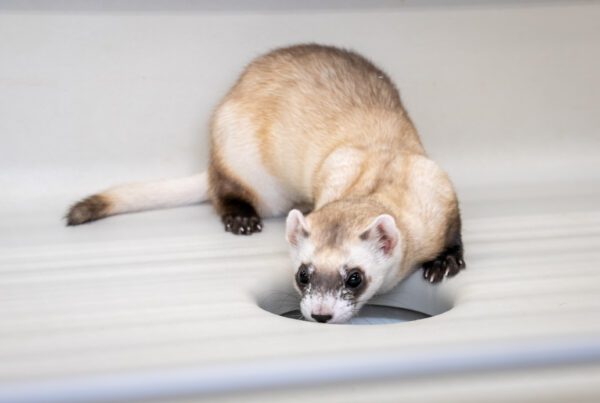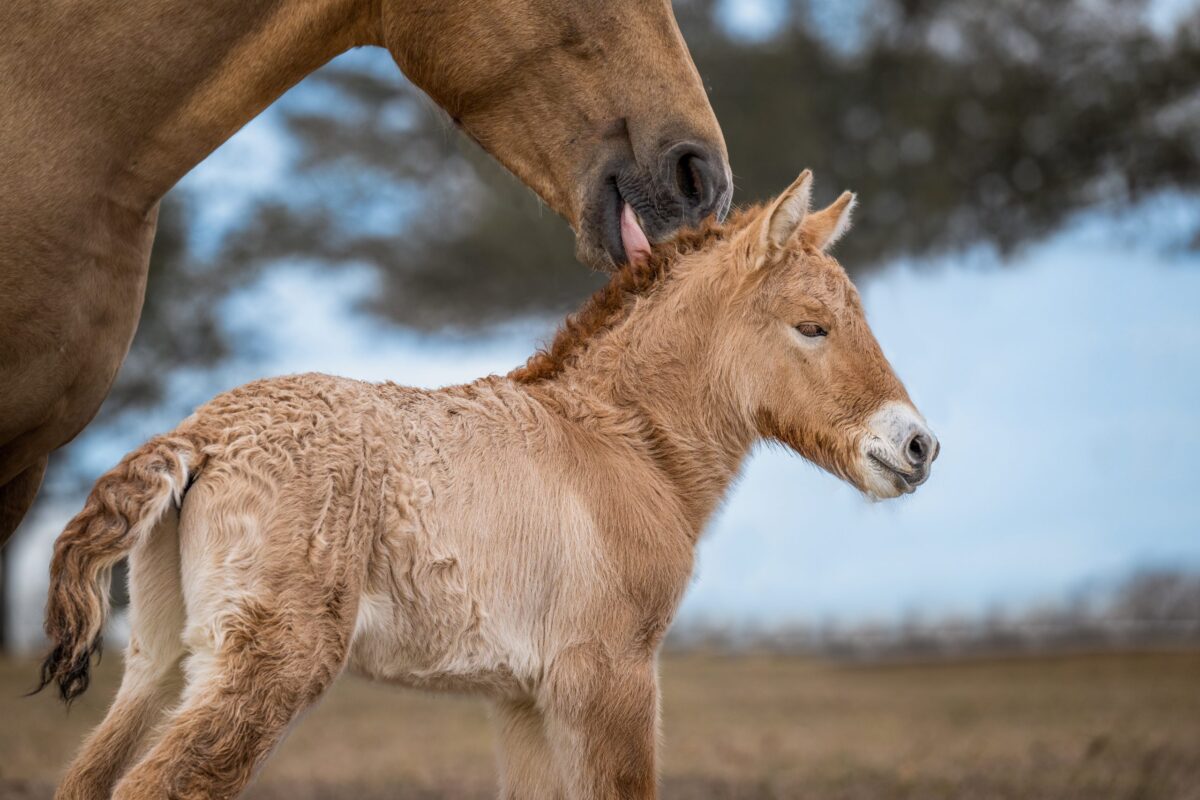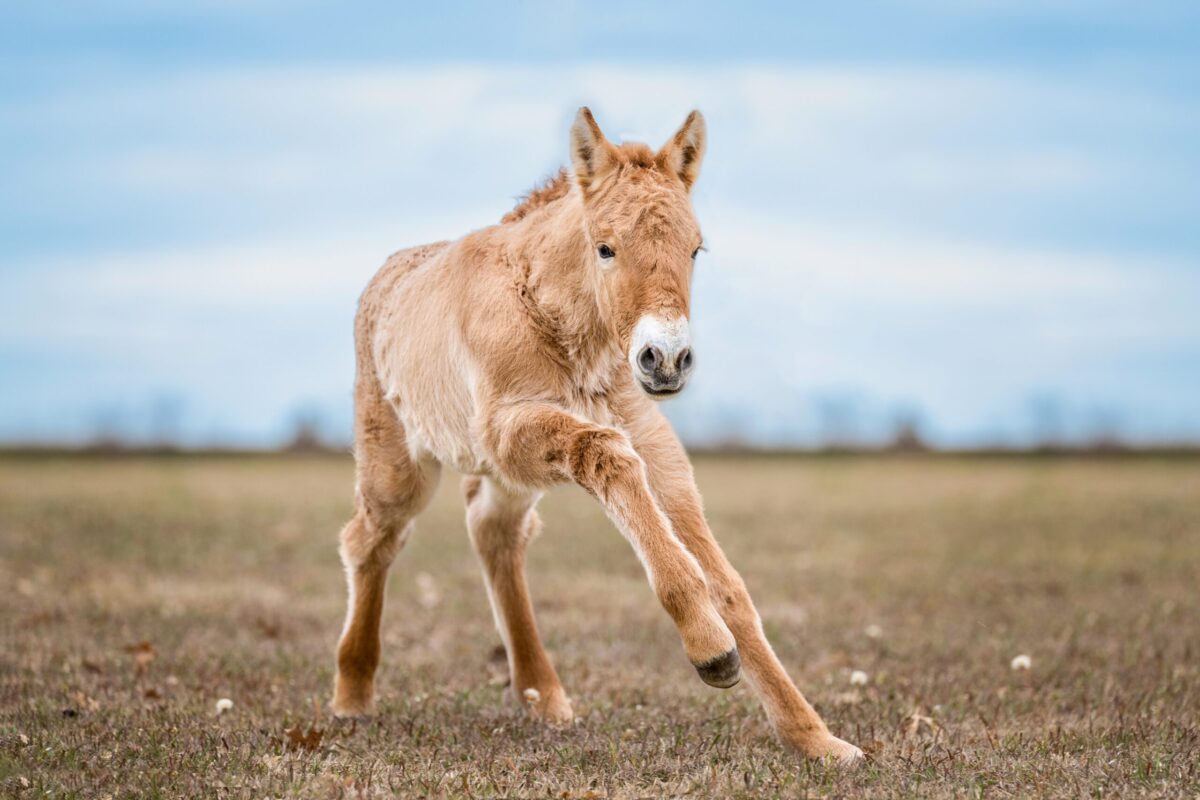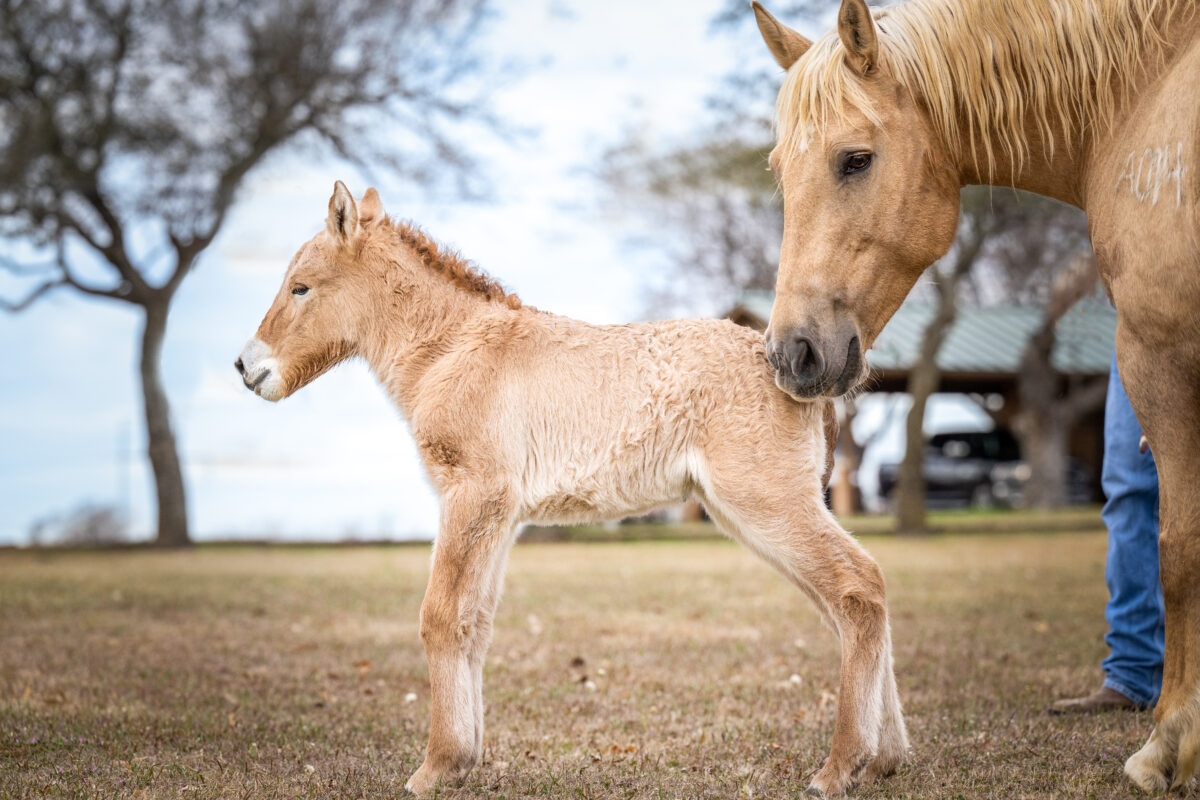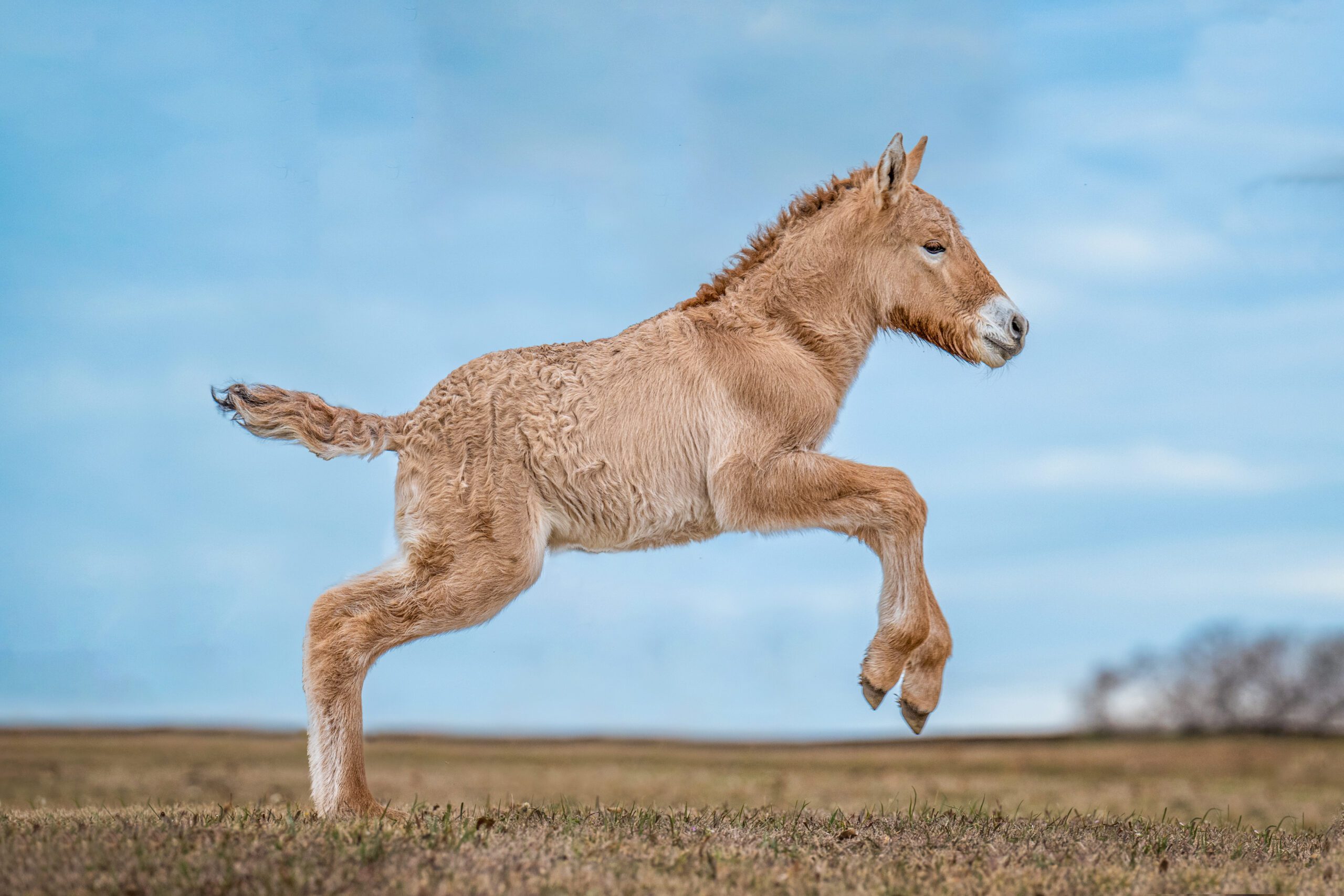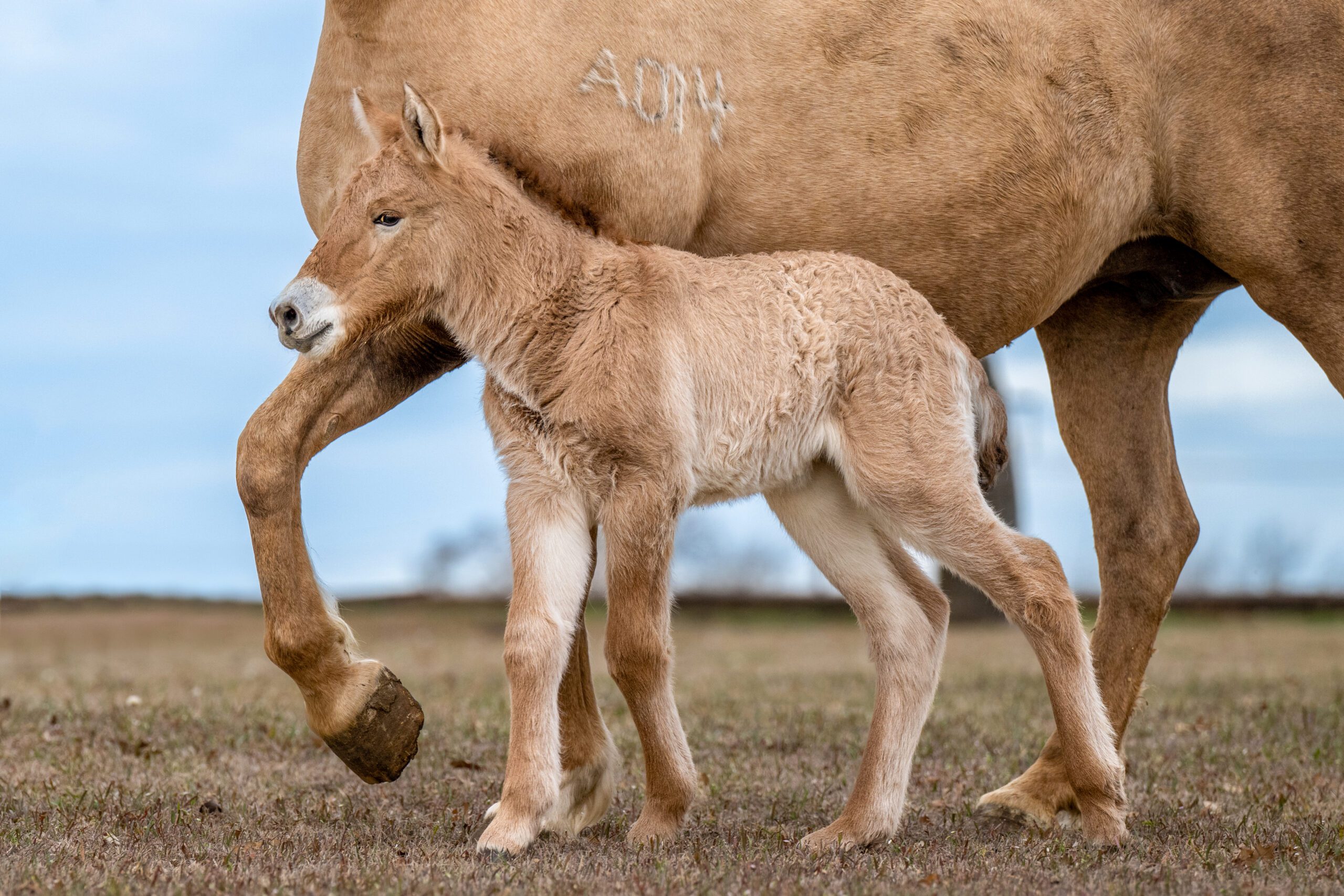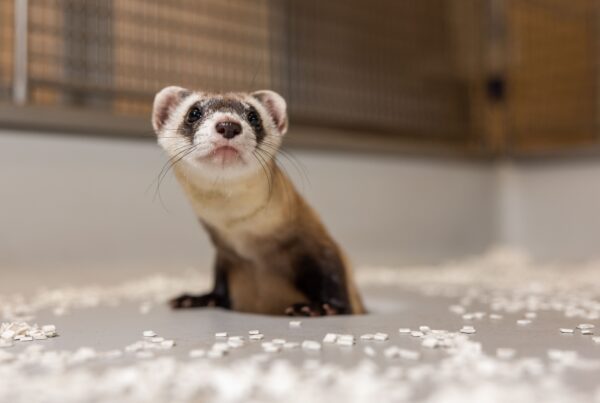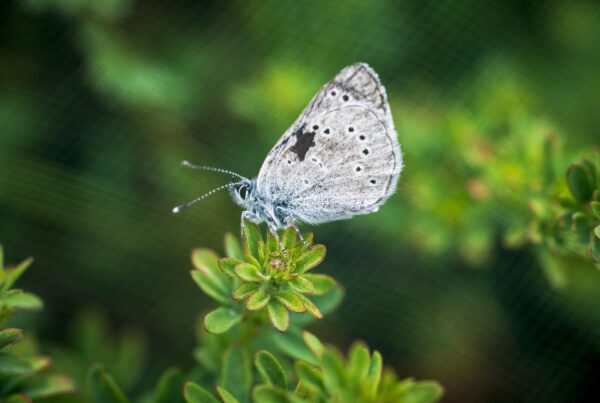Birth Offers Further Hope for Use of Cloning as a Viable Tool for Conservation
SAN DIEGO/April 19, 2023 – Scientists are thrilled with the recent birth of the world’s second successfully cloned Przewalski’s horse, supporting the concept that cloning can be a viable tool for the genetic rescue of endangered species. The foal, born Feb. 17, 2023 to a domestic surrogate mare, is a clone of a male Przewalski’s horse stallion whose living cell line was cryopreserved over 40 years ago in the San Diego Zoo Wildlife Alliance Biodiversity Bank’s Frozen Zoo®.
The world’s first cloned Przewalski’s horse, Kurt, is the genetic twin of the new foal, as he was born in August 2020 from the same stallion’s living cell line. The birth of the second Przewalski’s horse clone and the 2020 birth of Kurt, are a result of a partnership between nonprofit Revive & Restore, the animal cloning company ViaGen Pets & Equine, and San Diego Zoo Wildlife Alliance, to bring back genetic diversity to the endangered Przewalski’s horse species.
“The most transformative moments in conservation happen when the brightest minds collaborate and discover new possibilities for wildlife,” said Paul A. Baribault, president and chief executive officer, San Diego Zoo Wildlife Alliance. “Our work to rescue endangered species is possible because we’ve come together as an alliance of conservationists, whose goal is to help create a world where all life thrives. We are inspired by this incredible achievement and the impact it will have on Przewalski’s horses worldwide.”
Until the recent birth of this Przewalski’s horse foal, cloning had only successfully produced a single individual of any endangered species. The foal’s birth provides evidence that cloning is an increasingly viable means for species conservation and that the objectives of using cloning for population management can be more fully assured.
“This is a big deal for conservation,” said Ryan Phelan, co-founder and executive director of Revive & Restore. “Cloning as a tool for genetic rescue has been underutilized. Here, we have increasing evidence that cloning is a viable strategy to revive lost genetic diversity in endangered species.”
“Having two stallions of a genetically valuable line is a huge boost for the conservation of the species,” explained Ben Novak, lead scientist at Revive & Restore. “It means twice the potential to revive genetic diversity in this species.”
Formerly extinct in the wild, the Przewalski’s horse has survived for the past 40 years almost entirely in zoos around the world, and nearly all of the surviving horses are related to just 12 Przewalski’s horses born in native habitats. Ongoing reintroductions of Przewalski’s horses into their native habitats have established several herds in grasslands in China and Mongolia. To maintain genetic variation, however, scientists believe more work needs to be done to ensure the species’ future survival. Advanced reproductive technologies are relatively standard for domestic horses and cattle. However, there have been few attempts to work with endangered species.
“He has been a healthy, amazing foal from birth,” said Blake Russell, president of ViaGen Pets & Equine, describing the new Przewalski’s horse foal. “He was up and nursing within a few minutes, and only slows down for his regular naps. We are thrilled to be a part of this effort, and look forward to more milestones ahead.”
The new foal will eventually be moved from his birthplace at ViaGen Pets & Equine’s cloning facility in Texas to the San Diego Zoo Safari Park. Kurt was moved from ViaGen Pets & Equine’s facility to the Safari Park in March 2021.
Przewalski’s horses normally live in groups, where a youngster secures their place in the herd from their mother. Because the foal and Kurt were not born into a herd, San Diego Zoo Safari Park wildlife care experts are working to ensure that these horses gain the unique behavioral language they will need to interact and thrive among the larger herd of Przewalski’s horses at the Safari Park. Kurt is currently learning the language of being a wild horse from his companion, Holly, a young female of his own species. The plan is for Kurt and the new foal to become breeding stallions when they reach maturity at about 3 to 4 years of age.
“Over the more than 100-year history of human management of Przewalski’s horses and their extinction in the wild, there have been multiple genetic bottlenecks that have diminished the gene pool of the species, including in its reintroduction into the wild,” said Oliver Ryder, Ph.D., Kleberg Endowed Director of Conservation Genetics, San Diego Zoo Wildlife Alliance. “It is an enormously hopeful, unprecedented step for the Frozen Zoo to have the capacity to restore genetic diversity and resiliency in the ongoing efforts to conserve the Przewalski’s horse.”
About Revive & Restore
Revive & Restore is the leading wildlife conservation organization promoting the incorporation of biotechnologies into standard conservation practice. The Sausalito, California nonprofit was formed in 2012 with the idea that 21st century biotechnology can and should be used to enhance genetic diversity, build disease resistance, and facilitate adaptation. Its mission is to enhance biodiversity through the genetic rescue of endangered and extinct species. Learn more at reviverestore.org.
About ViaGen Pets & Equine
ViaGen Pets and Equine is the worldwide leader in cloning the animals we love. For over 20 years, we have been committed to the health and well–being of every animal we work with. Our team includes leading scientists, and we believe that moving the promising and exciting area of animal genetic research forward will benefit all animals. Learn more at viagenpets.com
About San Diego Zoo Wildlife Alliance
San Diego Zoo Wildlife Alliance is a nonprofit international conservation leader, committed to inspiring a passion for nature and working toward a world where all life thrives. The Alliance empowers people from around the globe to support their mission to conserve wildlife through innovation and partnerships. San Diego Zoo Wildlife Alliance supports cutting–edge conservation and brings the stories of their work back to the San Diego Zoo and San Diego Zoo Safari Park—giving millions of guests, in person and virtually, the opportunity to experience conservation in action. Learn more at sandiegozoowildlifealliance.org
More posts in News & Media
